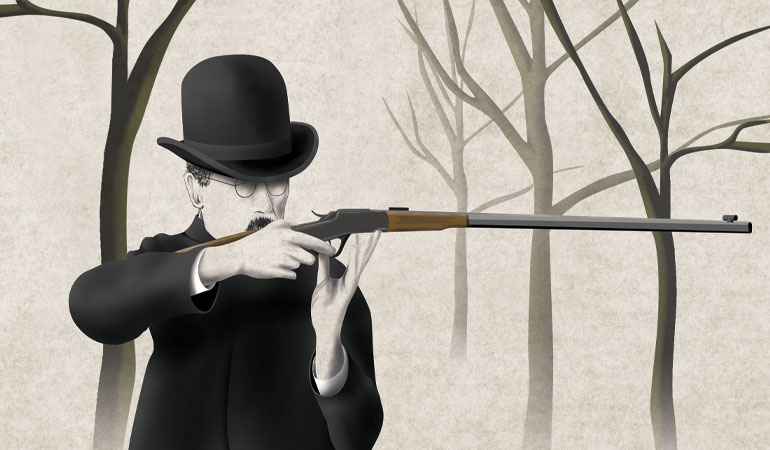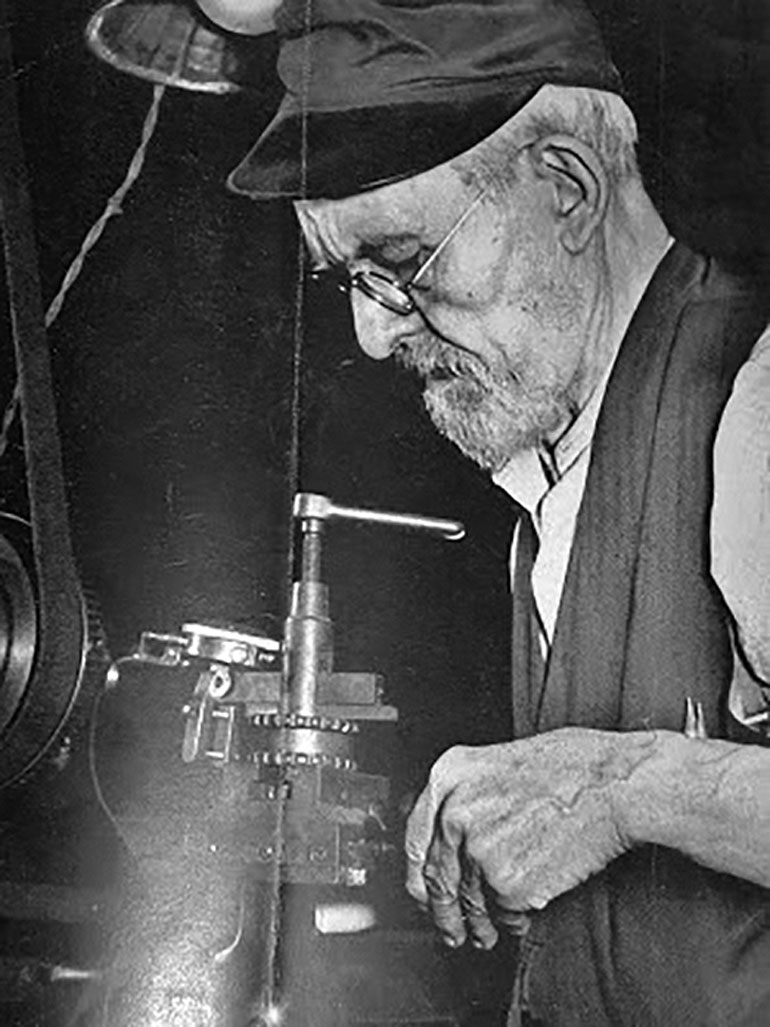
C.W. Rowland produced an amazing 0.721-inch, 10-shot group at 200 yards with a Ballard-Pope Schützen rifle chambered for .32-40. That shooting feat was accomplished in 1901, and the name Pope in reference to that rifle belonged to Harry M. Pope. He was known for producing accurate rifle barrels. In fact, he was driven to make the best barrels in the world.
Harry Melville Pope was born on August 15, 1861, in Walpole, New Hampshire, and moved with his family to Worcester, Massachusetts, in 1862. By age six, his mother, his father, and his sister had died, and he was being raised by an aunt. He learned about mechanical things by working in his uncle’s bicycle shop. It was there that he, at the age of 12, rifled his first barrel—a brass barrel for an air-powered dart gun—using a foot lathe and barrel broach that he fashioned himself.
At 20, Harry enrolled at the Massachusetts Institute of Technology, where he studied mechanical engineering. At 26, he made a .25-caliber rifle barrel that he used to win a shooting contest. His load was 25 grains of blackpowder under 100-grain bullets, and he handcrafted the cartridge cases used for that rifle by turning them from solid brass. He soon became obsessed with making the perfect rifle barrel and took up offhand competition shooting.
In his quest to produce the best rifle barrels in the world, he did a fair amount of benchrest shooting, although he stated that he preferred shooting offhand. He was an innovator and invented a special machine rest to eliminate the human factor when testing his barrels. Eventually, he worked with many top shooters, wildcatters, and riflemakers of the time, including Dr. F.W. Mann, Harvey Donaldson, W.V. Lowe, Townsend Whelen, C.W. Rowland, and Ned Roberts, among others.

According to writer Sam Fadala, Harry’s barrels were so accurate due to two factors. One was the special style of rifling Harry used. The other was Harry’s practice of loading the breechloading rifles from the muzzle.
Harry used an 8/8 rifling system. That means he used eight grooves and eight lands. The grooves were wide, flat, and shallow. Groove depth was approximately 0.004 inch. The lands were narrow with the corners rounded off.
Loading the breechloaders from the muzzle fostered better accuracy because it allowed the bullets to be perfectly centered in the bore when they were seated. It also provided more efficient and effective burning of the powder.
As related by Harvey Donaldson, Harry’s method of loading a breechloader from the muzzle was as follows: First insert a dummy cartridge (with the mouth of the case plugged) into the rifle’s chamber. Then carefully place the bullet into the rifle’s muzzle and push it down until it touches the dummy round. Withdraw the ramrod slowly so as not to suck the bullet part way up the barrel. Replace the dummy cartridge with a loaded one that had a grease wad on top.
Some writers have reported that some individual Pope rifles were in use for more than 40 years—after having been fired 35,000 to 40,000 times—and were still able to produce perfect scores at 200 yards. Incredibly, one Harry Pope rifle was reported to have been fired 125,000 times with 700 pounds of powder and 4,000 pounds of lead going through its bore, and it was still accurate.
Harry produced barrels for more than six decades, but he also invented shooting-related products. In addition to his machine rest, he produced a universal bullet mold, a lead melting pot, and an iron front sight that shooters prized. Articles and books have been written about Harry, and he even wrote an article or two himself for various shooting magazines.
Driven to produce the best barrels in the world, Harry often referred to himself as a mechanical engineer, but he also was a self-confessed “gun crank.” Harry M. Pope passed away on October 11, 1950. He was 89 years old.